Voice song search is the perfect solution for those moments when a melody won’t leave your head — but the song’s name is nowhere to be found. Ever had a tune stuck in your head and just couldn’t remember what it was called? We’ve all been there. Maybe you heard it playing softly in a café, in the background of a TikTok video, or someone casually hummed it. Whatever the case, you want to find that song — fast.
In 2025, you don’t need to type lyrics or know the artist anymore, Voice Song Search is a smart feature. Just hum, sing, or whistle a few seconds of the melody, and smart tools like Google’s “Hum to Search”, Shazam, and SoundHound will do the rest. You can identify almost any tune in seconds using cutting-edge AI and machine learning technologies.
These apps use powerful AI and machine learning to recognize your voice, match the melody, and show you the song — all within seconds. In today’s fast-paced world, people want instant answers — and that includes music. In 2025, voice song search isn’t just a novelty — it’s a game-changer for 🎧 Music lovers, 🎥 Content creators, 🎹 Musicians and producers, 🎶 Anyone curious about a melody.
With just your voice, you can unlock a world of music — no typing required. 🙌🎵, voice song search is your new best friend. In this guide, we’ll look at the best voice song finder tools in 2025, how they work, and which one is best for your needs. Let’s dive in! 👇
Table of Contents
What Is Voice Song Search?
Voice Song Search is a cutting-edge technology that allows you to identify songs by humming, singing, or whistling a part of the melody. Even if you don’t remember the lyrics or the artist’s name, these tools can recognize the tune and provide you with the song details. 🎤🎵
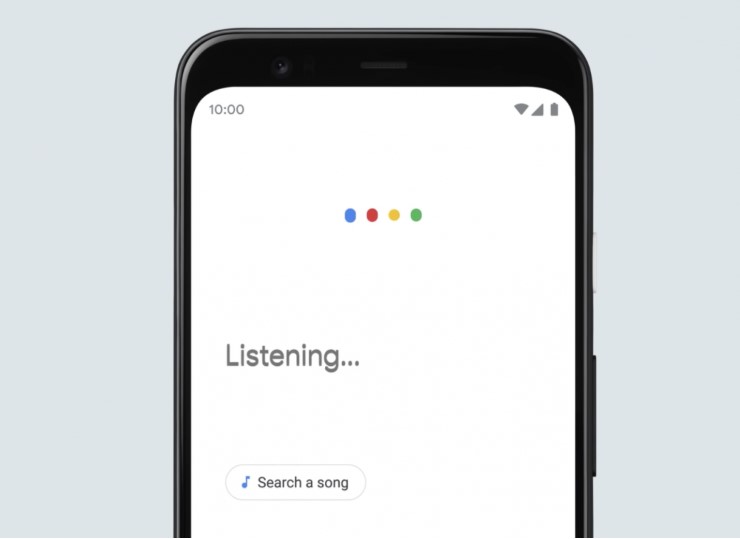
It’s important to distinguish between Voice Song Search and Voice Search, as they serve different purposes:
| Feature | Voice Search 🗣️ | Voice Song Search 🎶 |
| Purpose | Search the web or apps using spoken queries | Identify songs by humming, singing, or whistling |
| Example Command | “What’s the weather today?” ☁️ | Humming a melody 🎼 |
| Technology Used | Speech recognition and natural language processing | Audio fingerprinting and machine learning |
Voice Search enables users to perform searches on the internet by speaking their queries aloud rather than typing them. It leverages advanced technologies like natural language processing (NLP), machine learning, and speech recognition to understand and respond to user queries accurately.
Real-Life Use Cases
Voice Song Search is incredibly useful in various scenarios:
- 🤔 Humming a tune that’s stuck in your head
- 🎤 Singing a snippet of a song you heard but can’t identify
- 😗 Whistling a melody from a commercial or background music
These tools are designed to help you identify songs by humming using just the sound of your voice, making music discovery more accessible and intuitive. 🎧✨
How Does Voice Song Search Work?
Voice Song Search may seem like magic — but behind the scenes, it’s powered by smart tech like audio fingerprinting, machine learning, and AI. Let’s break it down. 🔍🎼
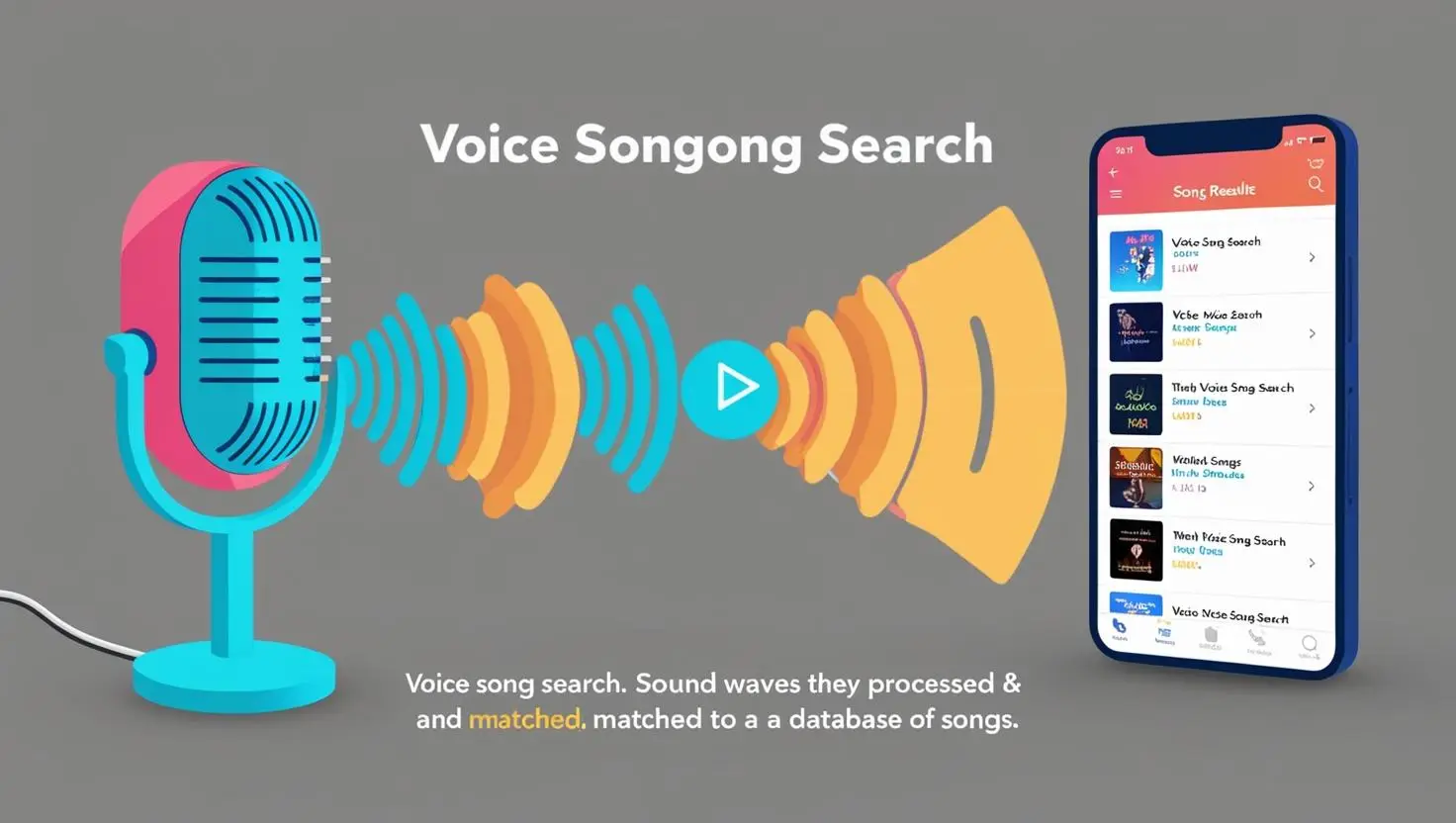
Audio Fingerprinting Explained
When you hum or sing a tune, the app creates a unique audio fingerprint — a digital summary of your melody. This fingerprint captures key musical features like:
- 🎵 Pitch
- ⏱️ Tempo
- 🎶 Rhythm
- 🎤 Timbre (tone quality)
This fingerprint is then matched against a huge database of songs to find music by voice the closest match — even if your version is slightly off-key or imperfect!
From Voice Sample to Song Match
Here’s the full journey from find music by voice to the song result:
- 🎙️ Voice Sample – You hum, sing, or whistle a tune.
- 📊 Waveform Analysis – The app analyzes the audio wave digitally.
- 🧬 Feature Extraction – It identifies melody patterns, tempo, pitch, etc.
- 🧾 Fingerprint Generation – These features are turned into a unique “song ID.”
- 🔍 Database Match – The fingerprint is compared with millions of known songs.
- ✅ Result Output – You get the best match with options to stream or download. 🎧
Machine Learning & AI in Music Recognition
Modern song name finder tools are powered by machine learning algorithms that get smarter over time. These systems are trained on massive datasets including:
- Thousands of melodies and songs
- Different singing styles and accents
- Noisy environments and real-world inputs
They learn from user interactions to improve recognition accuracy — even if you’re off-key!
Google’s Advanced AI Models
Google’s “Hum to Search” feature uses deep learning models like convolutional neural networks (CNNs). These models analyze your hummed input and compare it with complex melody data.
📌 Fun Fact: As of 2025, Google’s models are among the most accurate in the world for recognizing hum to search songs — even in noisy environments.
Best Voice Song Search Tools in 2025
Looking to find that mystery tune in your head? These top voice song search tools in 2025 can help you hum, sing, or whistle your way to a match — fast and easy! 🚀🎤
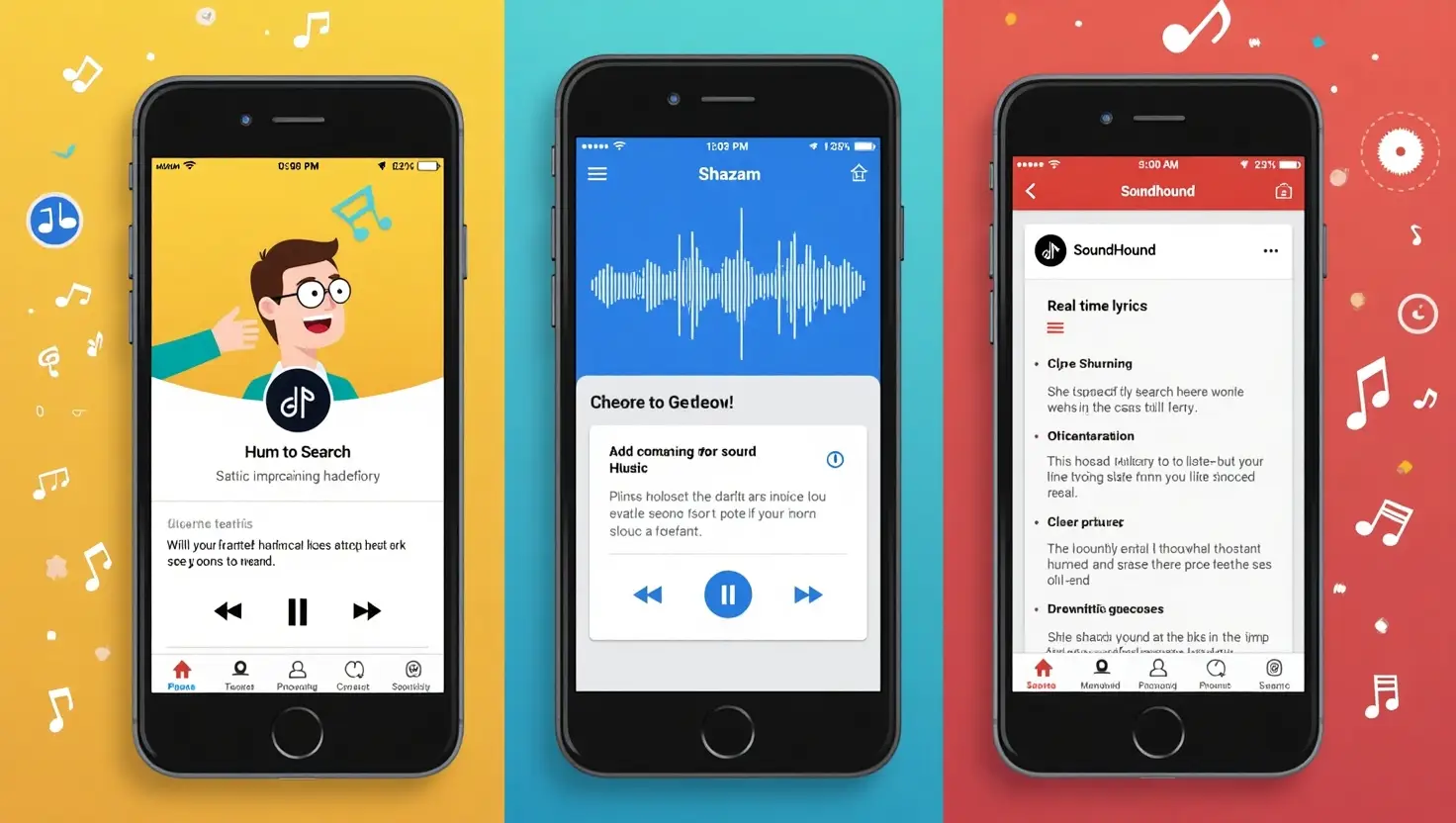
🔍 Google’s “Hum to Search”
One of the most powerful tools available today, Google’s Hum to Search works directly from your phone’s Google app or Google Assistant.
✅ How It Works:
- Open the Google app or activate Google Assistant.
- Say “🎶 What’s this song?”
- Hum, sing, or whistle for 10–15 seconds.
- Google analyzes your melody and matches it in real-time.
Pros:
- Built into Android phones and the Google app (no download needed) 📱
- Supports humming, singing, and whistling 🎶
- Fast and highly accurate thanks to Google AI ⚡
Cons:
- May struggle with very off-key or low-quality input
- Performance may drop in noisy environments 🌪️
Shazam (by Apple)
Shazam is a legendary name in music recognition — but it’s best suited for recorded songs, not voice input.
✅ Best For:
- Identifying songs playing from a speaker, TV, radio, or app 🔊
Pros:
- Extremely accurate with original music recordings 🎧
- Integrated with Apple Music and Siri 🍎
- Works offline for previously saved samples
Cons:
- ❌ Does not support humming, singing, or whistling
- Less useful for melody-only input
SoundHound
SoundHound is the most versatile option for voice-based music search, supporting both humming and spoken commands.
✅ Features:
- Say “Hey SoundHound” to activate hands-free
- Hum, sing, or say the name of the song
- View real-time lyrics and artist info
Pros:
- Great for humming or singing 🧑🎤
- Includes voice search, song recognition, and lyrics all-in-one 📱
- Ideal for multitaskers and creators
Cons:
- Slightly slower than Google’s search
- Interface may feel cluttered for new users

📊 Comparison Table of top voice song search tools –
| 🛠️ Tool | 🎯 Accuracy (Humming) | ⚡ Speed | 📱 Platform Compatibility |
| ⭐⭐⭐⭐⭐ High | 🚀 Fast | Android, iOS, Google App | |
| Shazam | ❌ None | 🚀 Fast | Android, iOS, Siri (Apple) |
| SoundHound | ⭐⭐⭐⭐ Medium-High | ⏱️ Moderate | Android, iOS, Voice Command |
How to Use Voice Song Search on Different Devices
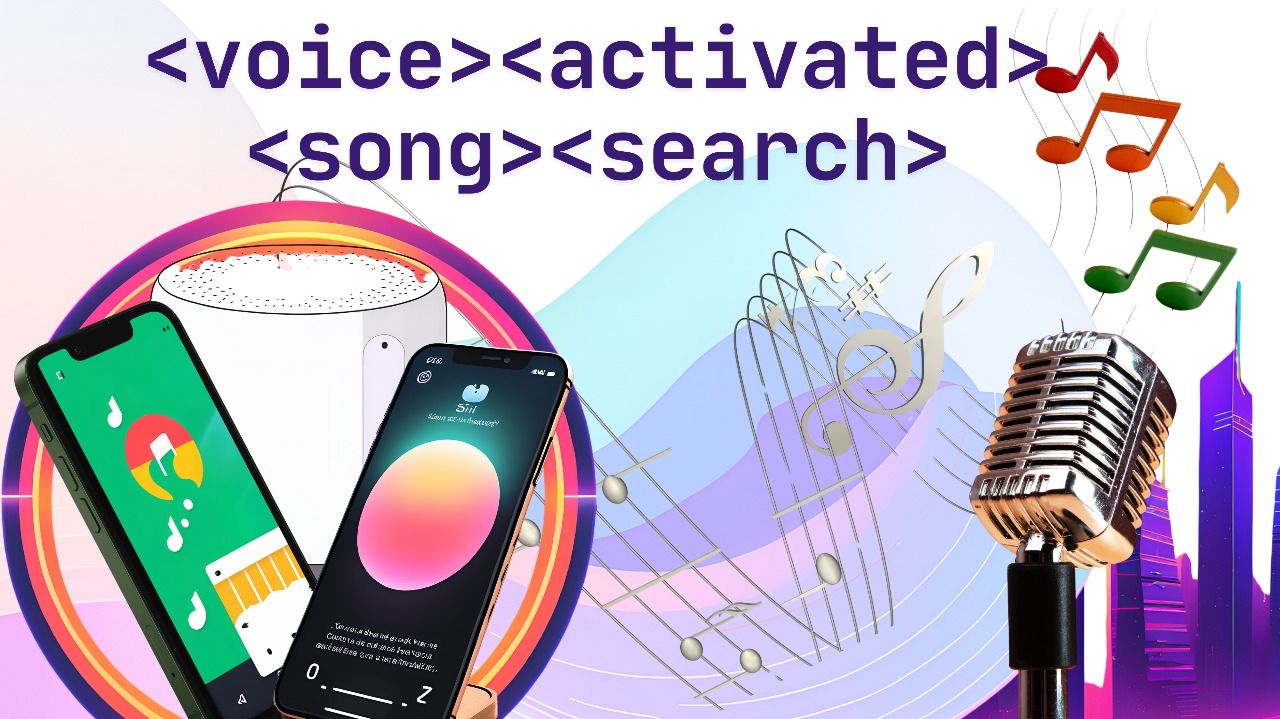
Android (Google Search App)
- Open the Google Search app.
- Tap the microphone icon or say “Hey Google.”
- Say “What’s this song?” and begin humming for 10-15 seconds.
- Google will present potential matches with artist info and links to listen.
iOS (Shazam, Siri, SoundHound)
With Siri:
- Activate Siri by saying “Hey Siri.”
- Say “What’s this song?” and then start humming.
With Shazam App:
- Open the Shazam app.
- Tap the Shazam button and hum or sing.
- The app will listen and present results.
With SoundHound:
- Open the SoundHound app.
- Tap the orange SoundHound button.
- Hum or sing your tune clearly for best results.
Smart Assistants (Google Assistant, Alexa, Siri)
Google Assistant:
- Say “Hey Google, what’s this song?”
- Hum for a few seconds.
Amazon Alexa:
- As of 2025, Alexa supports limited music voice search via humming. Use third-party skills like “Song ID.”
Apple Siri:
- Integrated with Shazam, Siri can identify songs by humming.
Troubleshooting Voice Song Search
Even with powerful AI and advanced music recognition technology, voice song search tools aren’t perfect. Sometimes, they just don’t return the song you’re looking for—or worse, they give you the wrong one. Let’s explore the common reasons behind this and how to fix them.
Doesn’t Recognize the Song?
You hum or sing your heart out… and the app still says, “Sorry, we couldn’t find a match.”
Here’s why that might happen:
- Melody mismatch – Your humming might not closely resemble the original tune (off-key, wrong rhythm).
- Song not in the database – Some regional or obscure songs may not be indexed yet.
- Short input – If your sample is too brief (less than 5 seconds), it may not have enough data for analysis.
- Unclear audio – Low-quality microphones, echo, or distortion can affect recognition.
🔍 Solution: Try to hum a longer portion (10–15 seconds) of the most recognizable part of the song—usually the chorus. Use a steady rhythm and try to avoid pausing.
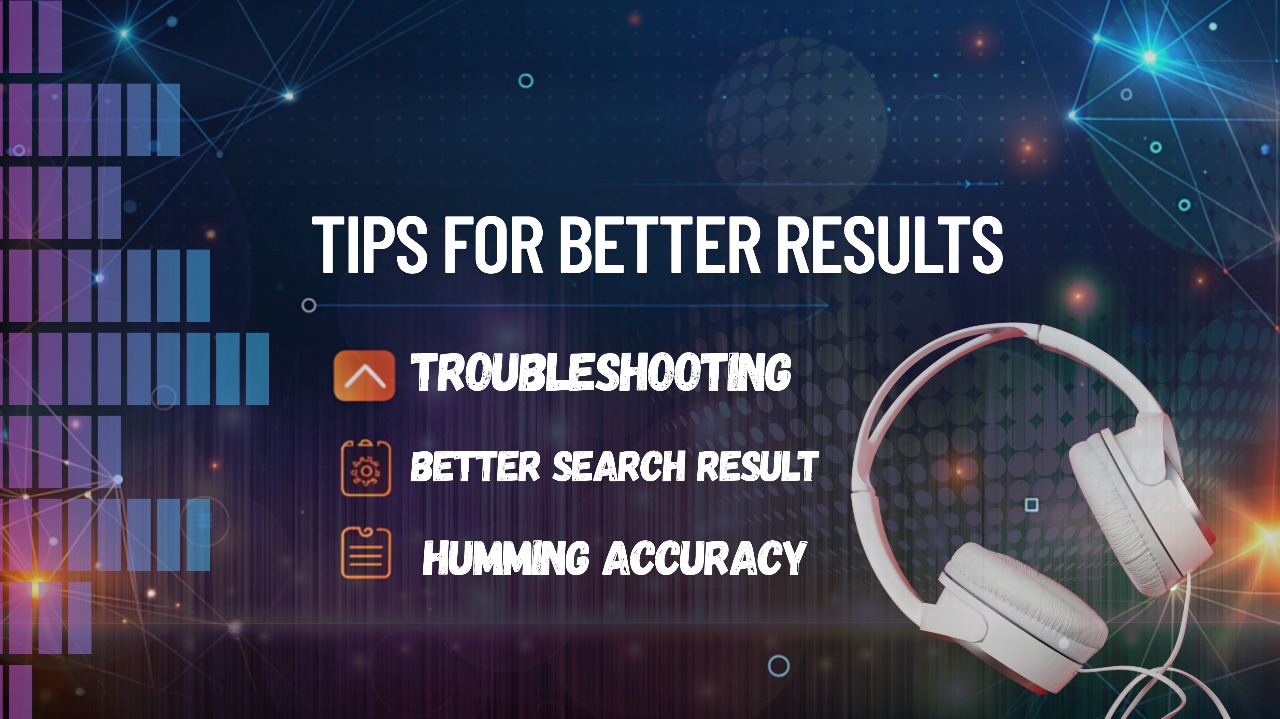
Low Humming Accuracy? Tips for Better Results
If the app regularly fails to detect the correct song, these simple adjustments can make a big difference:
✅ 1. Hum clearly and steadily
Avoid mumbling or speaking lyrics. Focus on the melody, even if you’re unsure about the pitch.
✅ 2. Use the chorus or hook
The chorus is usually the most recognizable part of a song—and it gives the algorithm more to work with.
✅ 3. Eliminate background noise
Try to record in a quiet environment. Turn off TVs, fans, or music playing in the background.
✅ 4. Get closer to the mic
Holding your phone too far from your mouth can reduce audio clarity. Aim for 6–8 inches distance.
✅ 5. Try again
Sometimes even AI needs a second try. If it fails the first time, try again with better clarity or a different part of the song.
📌 Pro Tip: Singing works better than humming in some song name finder like SoundHound, especially if you can include a few words from the lyrics.
- AI Image Enhancer vs Image Upscaler – What’s the Difference (Full Guide)
- What Is an AI Image Enhancer (Beginner Guide)
- Find Songs by Humming: What to Do When You Don’t Know the Lyrics
- Shazam vs Google Music Search vs SoundHound: Which One Finds Songs Better
- Top Voice Song Search Apps for Android and iOS to Identify Songs by Voice (2025 Guide)
Offline Limitations
Most music song name finder require an internet connection to function. That’s because your voice is sent to powerful cloud servers for analysis and matching.
If you’re offline:
- The app might record your input but won’t return results.
- Some tools (like Shazam) can save your voice input and match it once you’re back online.
🛠️ Solution: Make sure you’re connected to Wi-Fi or mobile data before using voice song search features.
Background Noise Interference
Voice recognition apps rely on clean input to function. If you’re in a noisy environment—like a café, subway, or street—background sounds can confuse the algorithm.
Typical interference sources include:
- Talking people
- Cars honking or traffic
- Wind or echo
- Music playing in the background
🎧 Fix it:
- Find a quieter space.
- Use a headset mic (if available) to isolate your voice.
- Speak or hum louder than the ambient noise.
Many newer apps use AI noise cancellation, but it’s not foolproof—clean audio is still your best bet.
Summary: Troubleshooting Tips
| Problem | Possible Cause | Solution |
| ❌ No Match | Off-key humming or short clip | Hum the chorus clearly for at least 10 seconds |
| 🔇 Background Noise | Noisy environment | Find a quiet space or use a better mic |
| 📴 Offline | No internet connection | Connect to Wi-Fi or data before using the app |
| 🔁 Inconsistent Results | Variation in tone, volume, or rhythm | Try again with clearer input and steady rhythm |
With these tips, your song name finder voice tool experience should improve significantly. Remember, even the best tools need good input to work their magic.
Google vs Shazam vs SoundHound (2025 Comparison)
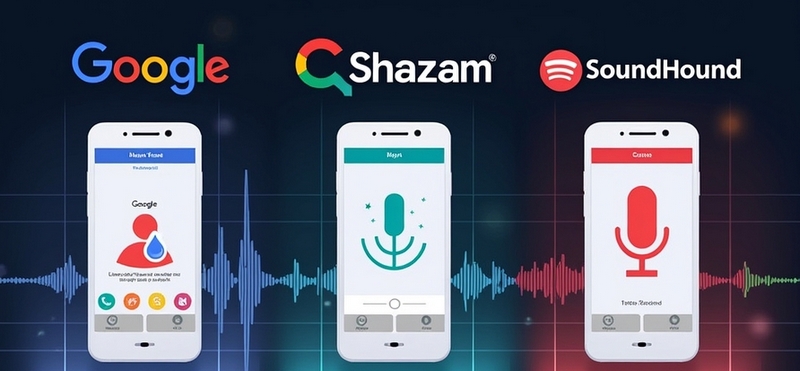
With so many options available, choosing the right song finder voice app can be confusing. Three of the biggest players in this space—Google, Shazam, and SoundHound—offer slightly different features and strengths.
Below is a feature-by-feature breakdown, followed by expert insight on which app is best for hum to search and which one excels at detecting background music.
Feature-by-Feature Comparison Table
| Feature | Google (Hum to Search) | Shazam | SoundHound |
| 🔍 Voice Song Search | Yes (Humming, Singing, Whistling) | No voice search – music only | Yes (Humming & Singing) |
| 🎧 Detect Music Playing | Yes (via Google Assistant) | Yes – very fast & accurate | Yes – strong detection engine |
| 🧠 AI-Powered Melody Matching | ✅ Advanced AI (melody-based) | ❌ Not optimized for melody input | ✅ AI with vocal melody training |
| 🌐 Offline Mode | ❌ Requires Internet | ✅ Offline tagging available | ❌ Requires Internet |
| 📱 Platform Availability | Android, iOS (via Assistant) | Android, iOS, macOS, watchOS | Android, iOS |
| 📚 Database Size | 100M+ songs (Google Knowledge Graph) | Large, Apple Music & iTunes integrated | Large, includes lyrics & indie content |
| 🗣️ Voice Command Integration | ✅ “What’s this song?” via Assistant | ❌ Not voice-activated directly | ✅ Built-in voice assistant “Hey SoundHound” |
| 💬 Lyrics & Info Support | Basic info from web | Rich lyrics & artist profiles | Real-time lyrics & background data |
| 🆓 Free to Use | ✅ 100% Free | ✅ Free with ads / Premium option | ✅ Free with ads / Premium option |
Which is Best for Humming or Singing?
| App | Humming Detection Accuracy | Best Use Case |
| ⭐⭐⭐⭐⭐ (Best) | Humming with no lyrics or rough melody | |
| SoundHound | ⭐⭐⭐⭐ | Singing with words or clearer melody |
| Shazam | ❌ Not supported | Doesn’t detect humming or singing |
✅ Winner: Google
With its deep AI training on human humming and singing, Google’s “Hum to Search” is the most accurate and accessible option for identifying song by humming—even if you’re off-key or unsure of the lyrics.
Which is Best for Music Playing in the Background?
| App | Detection Accuracy | Best Use Case |
| Shazam | ⭐⭐⭐⭐⭐ (Best) | Identifying studio tracks, even in loud places |
| SoundHound | ⭐⭐⭐⭐ | Detecting live music or indie tracks |
| ⭐⭐⭐ | Good with clear music, but not always reliable in noisy environments |
✅ Winner: Shazam
When music is playing around you—whether in a store, car, or restaurant—Shazam shines. It’s fast, highly accurate, and designed to work even in noisy environments with short sound clips.
Quick Summary
| Use Case | Best App |
| Identifying song by humming or singing | ✅ Google Hum to Search |
| Identifying song playing in the background | ✅ Shazam |
| Use voice commands + view real-time lyrics | ✅ SoundHound |
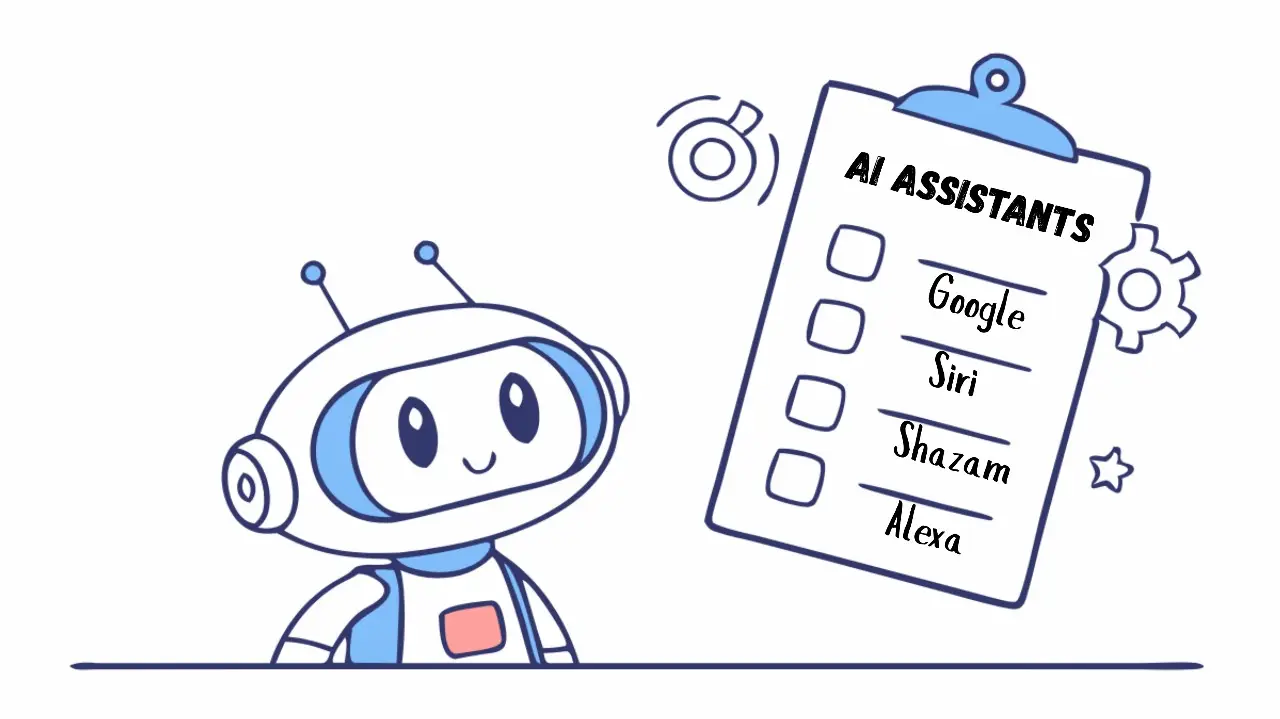
Final Verdict:
- Use Google when you’re trying to remember a tune stuck in your head.
- Use Shazam to quickly tag a song that’s currently playing.
- Use SoundHound if you want lyrics + voice-controlled features in one place.
The popularity of music voice search is growing rapidly across the globe. As voice technology becomes more accurate and accessible, users of all ages are turning to song name finder voice tools to find music by voice faster and more naturally.
Here’s a quick look at the latest trends in 2025:
Voice Search Adoption Rate (2025)
- Over 70% of smartphone users now use some form of voice search regularly.
- Nearly 1 in 3 music-related searches are performed via voice commands (Google Trends 2024–2025).
- Voice assistants like Google Assistant, Siri, and Alexa have seen a 40% rise in usage for song-related queries in the past year.
🗣️ Voice is no longer just a convenience—it’s becoming the default way to search for music.
Rise in Song ID Queries
- In 2024 alone, there were over 2 billion song identification requests across apps like Shazam, SoundHound, and Google.
- Google’s “Hum to Search” feature saw a 65% increase in usage year-over-year.
- The number of users identifying songs by humming has tripled since 2022, thanks to improvements in AI matching.
Who’s Using It? (Age Demographics)
| Age Group | Usage Rate for Voice Music Search |
| 13–24 years old | 78% regularly use voice tools |
| 25–34 years old | 69% use for music discovery |
| 35–49 years old | 52% occasionally use it |
| 50+ years old | 34% use, mostly through assistants |
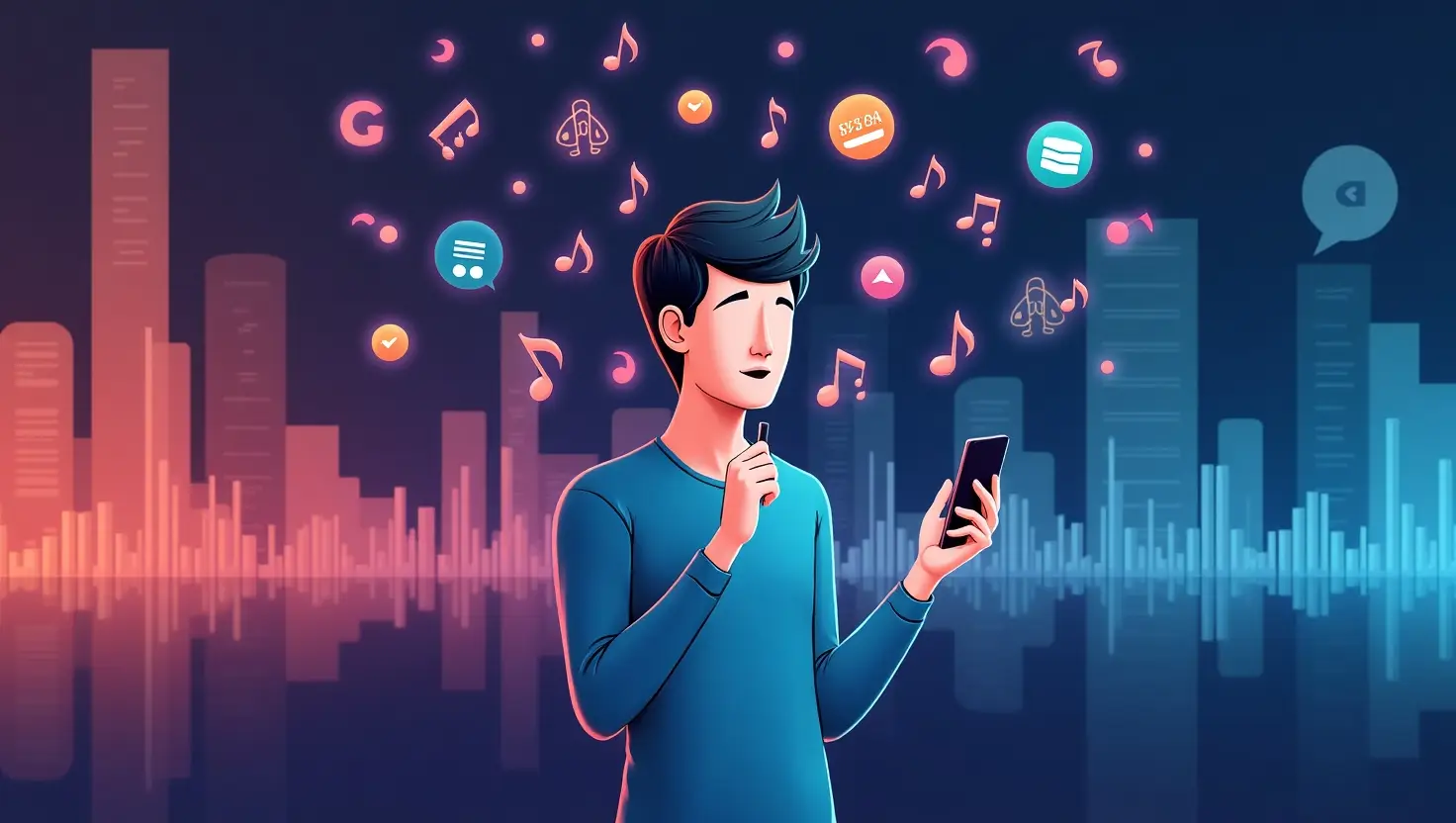
✅ Younger audiences (Gen Z and Millennials) are the most active users, but adoption is growing among all age groups due to smart speakers and mobile assistants.
Quick Stat Highlight (Visual Suggestion)
2025 Voice Song Search Growth
(Add a simple bar chart or infographic if publishing on a blog)
- 🔺 65% growth in humming-based searches
- 🔺 40% increase in Shazam queries
- 🔺 70% of smartphone users prefer voice song search
FAQs (People Also Ask)
Can I find a song by humming it?
Yes, you can! Tools like Google’s Hum to Search and SoundHound allow you to hum or sing a tune, and they’ll try to match it to a real song using AI-powered melody recognition. The more accurate your humming, the better the chances of a correct match.
Does Google recognize my singing?
Yes, Google can recognize your singing—even if you’re off-key! Using advanced machine learning models, Google compares the melody of your voice to a vast database of songs. Just open the Google app, tap the microphone icon, and say “What’s this song?”, then start singing or humming for 10–15 seconds.
Is Shazam good for humming?
No, Shazam does not support humming or singing input. It’s designed specifically to identify music that’s already playing in the environment, like a song on the radio or in a store. For humming, try Google or SoundHound instead.
What if the tool finds the wrong song?
Sometimes, voice song search tools can misidentify a track, especially if:
– The humming is unclear or off-tune
– There’s background noise
– The song is rare or not in the database

Independent soul. Always exploring, always evolving.

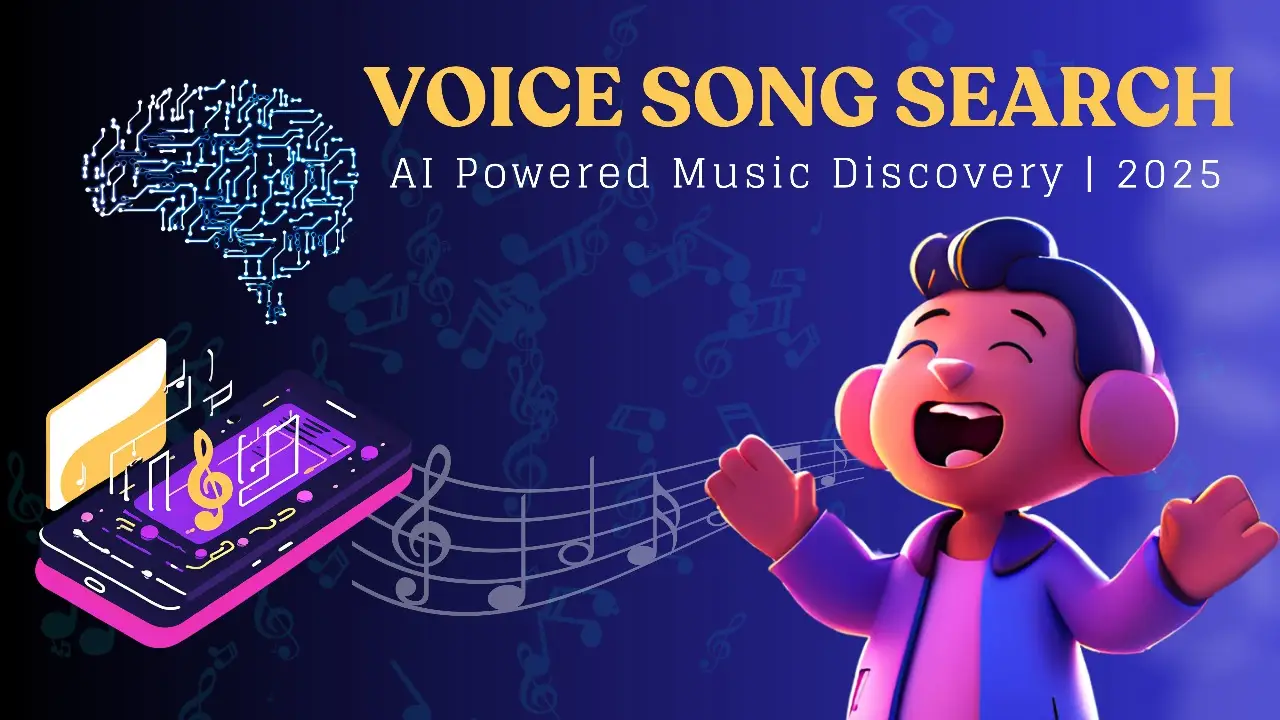
Leave a Reply